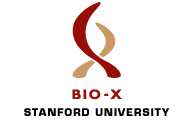Team:Stanford
From 2010.igem.org

| Home | Project | Applications | Modeling | Parts | Team | Notebook |
Contents |
Welcome to the Stanford team Wiki for iGEM 2010
Stanford iGEM is a student-run, faculty-directed research group at Stanford University. The objective of our interdisciplinary group is to design and build novel engineered biological systems using standardized DNA-based parts to submit to the iGEM (International Genetically Engineered Machines) competition, held annually at MIT. Our research draws from the principles of synthetic biology, an emerging interdisciplinary and multidisciplinary area that involves the design and construction of biological systems. Here is our team for the 2010 competition and our [http://igem.stanford.edu/ page] on the Stanford University Website.
If you are looking for our winning 2009 project, check out our old site.
Our Project: EscheRatio Coli
The field of synthetic biology is in the process of a rapid expansion. As more and more researchers join the burgeoning discipline, they will need new biological tools. This year our team created a new type of tool for the synthetic biologist's toolkit: a system to allow E. coli to sense the ratio of two different chemicals in its environment and produce a protein output based on that ratio. Our new sensors will allow synthetic biologists to explore novel application areas beyond the limits of current sensors. While designing these new tools, we asked ourselves several critical design questions. We invite you to follow along in our decision process.
Why Ratios?
Ratios rule the biological world, and controlling them will unlock a vast range of applications for synthetic biology. Current sensors can respond to absolute concentrations, but have no way of producing an output based on a ratio. Using such sensors, ratios must be computed by some external means. In other engineering disciplines, computers can be used to calculate a ratio from precise measurements, but biological engineering doesn't have that luxury. We need a hardwired device to compute and act on ratios independent of a controlling computer or human researcher.
The Stanford team's ratio sensors use biological machinery to eliminate the human component from ratio computation. Our output system is more efficient than two individual sensors and, most importantly, can pass its results on to other parts and devices. A ratio sensor performs a calculation that a user does not need or will not be able to. A ratio sensor frees up a wavelength channel on the measurement device, and, more importantly for the future, allows the computed ratio to be passed on to another part. A useful ratio sensor that could be utilized in a broad regime of biological applications needs to be operable and accurate in micro-environments; the Stanford team's ratio sensor is engineered to function within E. Coli, which is fully operable over a range of environments.
With the Stanford 2010 team's ratio sensors, synthetic biologists will be able to create more responsive genetic machinery capable of solving all sorts of problems. You can see some example uses of our circuits on our Applications page.
Why Two Designs?
Our team engineered two different ratio sensing systems because we envision wide range of applications that is too great in scope for one type of ratio sensor to cover effectively. In some instances, only one ratio may be important, and the sensor should be able to clearly delineate whether or not the ratio has passed that threshold. For example, detecting if a biologically significant event has occurred requires a switch-like behavior. In other cases, researchers may want their bacteria to respond with greater nuance to the chemical environment, or simply report on the state of that environment. In this case, a sensor capable of responding over a range of possible ratios would be more useful than a single switch.
In order to satisfy these two needs, our team created:
An sRNA-based sensor that reports the relationship between the present ratio of the chemicals and a single desired ratio via the presence or absence of signal.
The two input chemicals each bind to a receiver upstream of an sRNA and a reporter protein. Each sRNA is complementary to a specific RSID that includes the RBS of the opposite reporter protein. When the sRNA's bind to their target RSID sequences, they cover the RBS, preventing the translation of the reporter protein. The sRNA/reporter protein pair that received the greater stimulus from the environment wins out over the other reporter protein and determines the cell's output. Note that in place of a reporter protein, our system can be hooked up to any biological part.
A kinase-phosphatase sensor that reports the exact ratio via the intensity of the signal
The two input chemicals each bind to an inducible promoter upstream of a coding sequence, either the sequence for the kinase or the phosphatase. The coding sequence for the transcription factor is under the control of a constitutive promoter; therefore, there is always some basal level of the transcription factor present. The reporter gene is under control of an inducible promoter than can only be activated by a phosphorylated transcription factor. The transcription factor can only be phosphorylated by the kinase, the amount of which is controlled by the concentration of an inducer chemical. Likewise, the phosphorylated transcription factor can be dephosphorylated by the phosphatase, the amount of which is controlled by the concentration of a second inducer chemical. Thus, the intensity of the reporter output is a function of the relative concentrations of inducers: a ratio.
An iGEM Community: Why Twitter?
Our team also created an iGEM 2010 list on Twitter to allow teams to help each other solve lab problems and share ideas. We reviewed a similar system in place at MIT, which allowed members of the bioengineering department to send out short requests and tips to each other.
We chose Twitter with the following parameters in mind:
- Ease of use: our community should require minimal technical ability and have a straightforward user interface
- Speed and breadth of distribution: any query should be quickly sent out to the entire iGEM community, where it should be easy for other teams to see and respond to
- Brevity of messages: shorter messages are more likely to receive responses, and we wanted to avoid having long, intricate requests ignored by the community
- Pre-existing community: teams would more quickly adopt something that other teams were already doing, rather than something we created from scratch
When we looked at these factors, Twitter came out as a top choice. Its established functionality allowed users to quickly start tweeting without requiring technical skills. Twitter's list function allowed us to easily gather teams into one conversation, while its 140-character limit on tweets ensured that that conversation never became bogged down with lengthy posts. To top it all of, several teams were already on Twitter, giving Twitter some institutional momentum.
To check out the rest of our story, visit our Twitter page.
Acknowledgements
The following individuals have played an instrumental role in the success of our iGEM team. We would like to extend our heartfelt appreciation to the following faculty, postdocs and graduate students:
Faculty Sponsors
- Drew Endy
- Christina Smolke
- Demir Akin
Post Graduate/Graduate Student Mentors
- Graham Anderson
- Ryan Bloom
- Jerome Bonnet
- Andy Chang
- Annie Hazlehurst
- Ying Lei
- Francois St. Pierre
- Ariane Tom
- Isis Trenchard
- Christopher VanLang
- Rayka Yokoo
- Bo Zhou
Executive Director
- Anusuya Ramasubramanian
Sponsors
- [http://bioengineering.stanford.edu/ Stanford University Department of Bioengineering]
- [http://biox.stanford.edu/ Stanford BioX Initiative]
- [http://www.stanford.edu/dept/undergrad/cgi-bin/drupal/ Stanford University Vice Provost for Undergraduate Education]
Bay Area Corporate Affiliates
- [http://www.dfj.com/ Draper Fisher Jurvetson Venture Group]
 "
"





